Queen's final Scottish journey charts a life of service
- Published
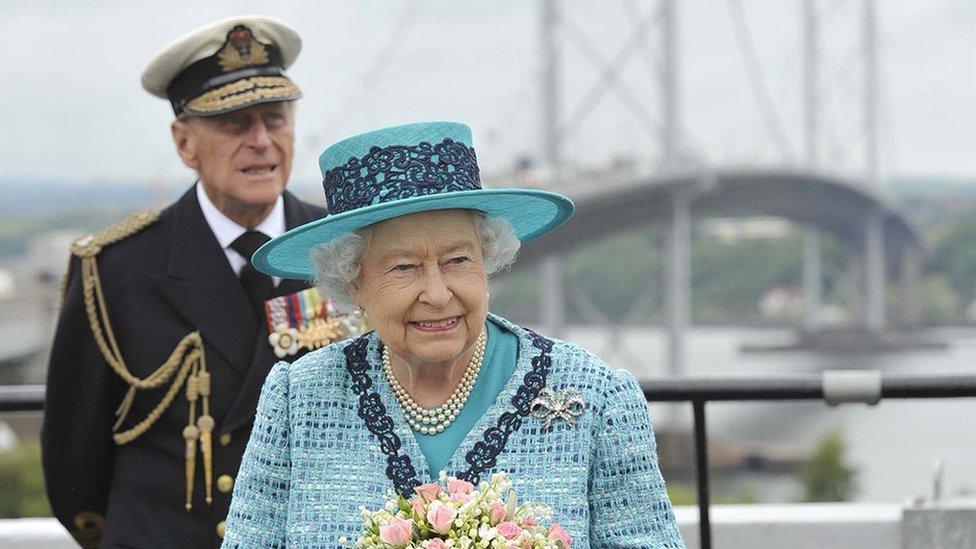
The Queen and the Duke of Edinburgh returned to the Forth Road Bridge 50 years after officially opening it
Queen Elizabeth II left her beloved Balmoral for the final time on Sunday on a journey that stirred memories of her life of service.
Her cortege wended its way through villages and towns she knew well. It skirted cities where she opened hospitals, congratulated business leaders, met schoolchildren and greeted well-wishers.
As well as the villages of Aberdeenshire, where she was considered a neighbour as much as a monarch, it travelled through Aberdeen, then south through Angus, Dundee, Perth and Fife.
Symbolically, Her Majesty's coffin was taken over Queensferry Crossing - a structure she opened in 2017.
Along this journey to her final resting place were the visible signs of the role she played in shaping modern Scotland.
Royal Deeside - Church and community
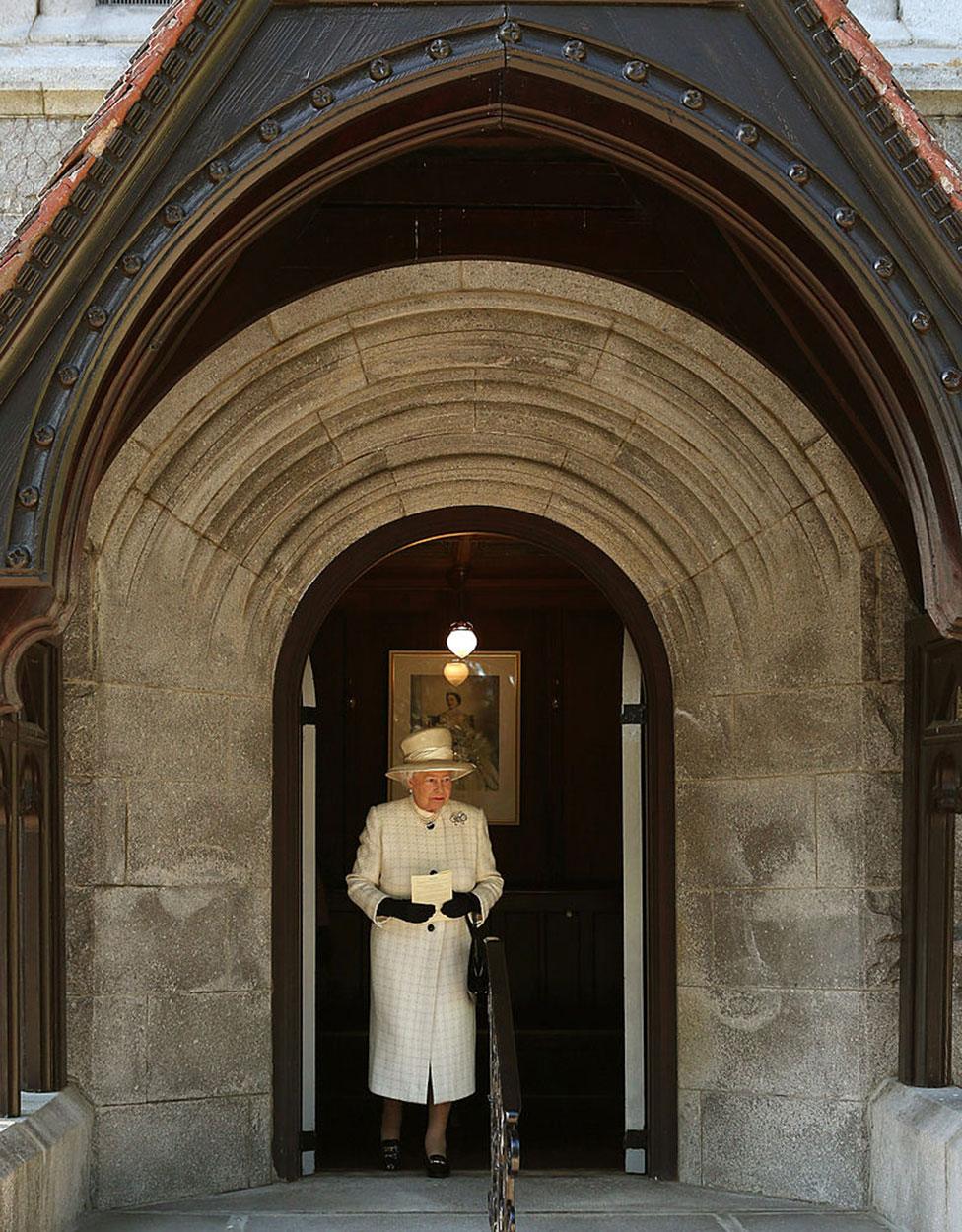
The late Queen marked the 100th anniversary of the beginning of World War One at Crathie Kirk in August 2014
After the Royal cortege left Balmoral it passed close to Crathie Kirk - the church where the Royal family have worshipped since Queen Victoria in 1848.
It was an important place to Queen Elizabeth, a woman of great faith. Just last weekend she hosted the Rt Rev Dr Iain Greenshields, the moderator of the General Assembly of the Church of Scotland.
He said she was "obviously frail...[but] absolutely on the ball", adding that she was "very much very engaged with what was happening in the church and what was happening in the nation too".
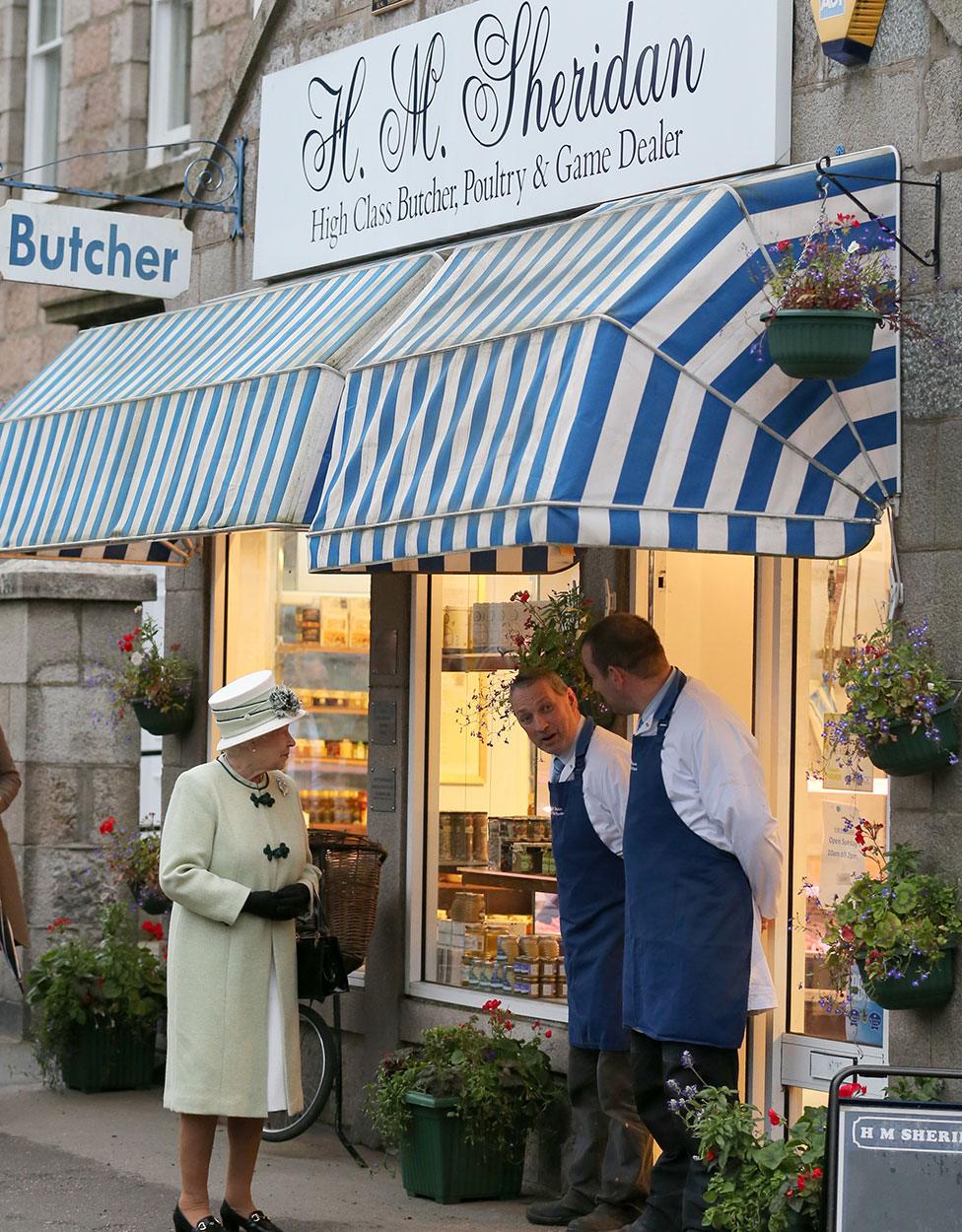
The late Queen spoke to the local butchers in Ballater before unveiling a plaque marking a Diamond Jubilee cairn in September 2012
It was also a link to the local community, which included the nearby village of Ballater, where she was considered a local by many.
After flooding caused millions of pounds worth of damage in 2015, the late Queen later met residents affected in an official visit and praised local efforts to recover.
Aberdeen and Dundee - Industry and innovation
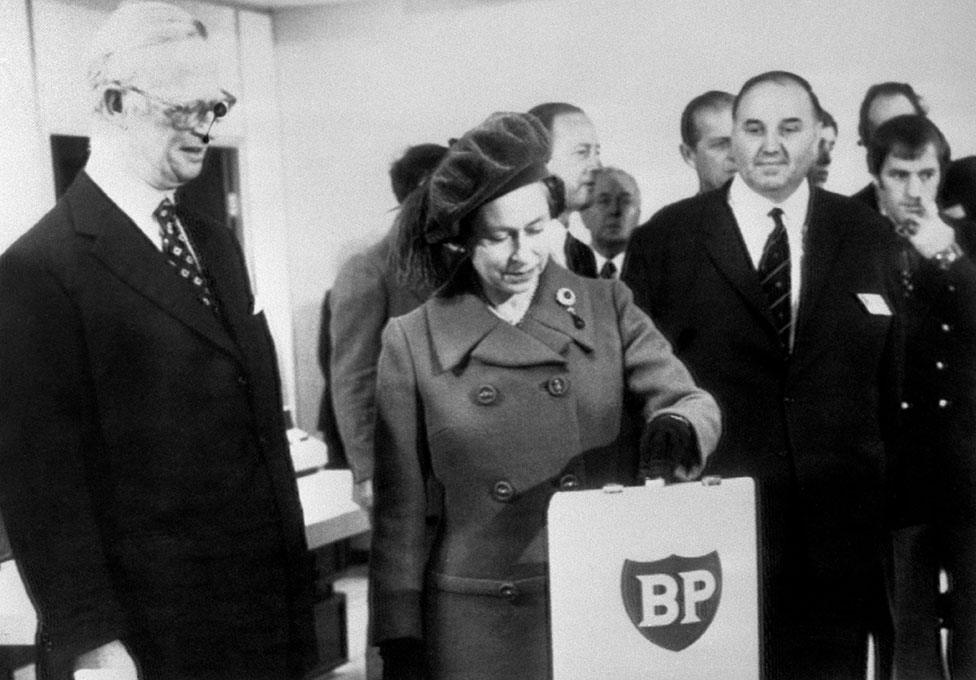
Queen Elizabeth II launched the flow of oil from the Forties Field in the North Sea to BP's Grangemouth refinery
The coffin was driven along the A93 towards Aberdeen, before turning south and crossing the King George VI bridge, named after her father.
The city was the focus of many trips by the Queen. It was where she opened a children's hospital in 2005 and hosted a special sitting of the Scottish Parliament in 2002.
But it was perhaps her actions in Dyce in 1975 which had the most profound effect on the city - she pressed a gold-plated button which formally began the operation of the UK's first oil pipeline., external
The 130-mile pipeline from Cruden Bay to Grangemouth served the Forties oilfield 110 miles east of Aberdeen.
It marked the beginning of a North Sea oil industry which brought thousands of new jobs and great prosperity to the north-east of Scotland.
However, faced with a climate emergency and an energy crisis, Europe's oil capital is looking towards renewable sources of energy.
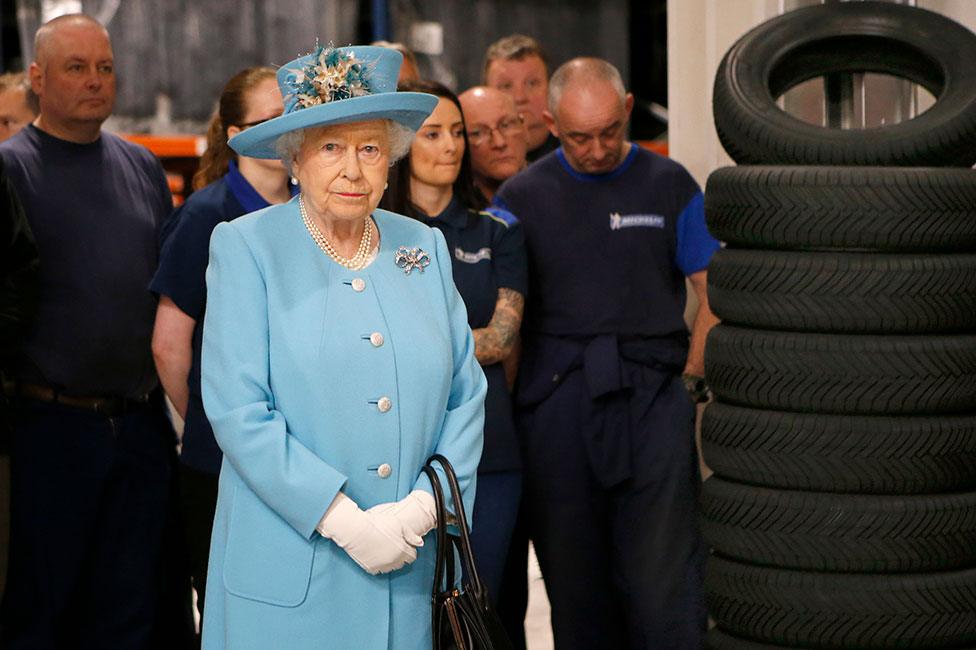
She met apprentices at the Michelin tyre factory in Dundee in 2016
Heading south on the A90, the coffin took in the Kingsway - designed to commemorate Edward VII - through Dundee.
During a trip to the city in 2016, the Queen met apprentices at the Michelin tyre factory's training school and workshop.
However, two years later the company announced the closure of the site, with the loss of 850 jobs.
More than 300 million tyres had been produced in the plant, which opened in 1971. It finally closed in June 2020 and is now an "innovation centre".
Angus - Childhood memories
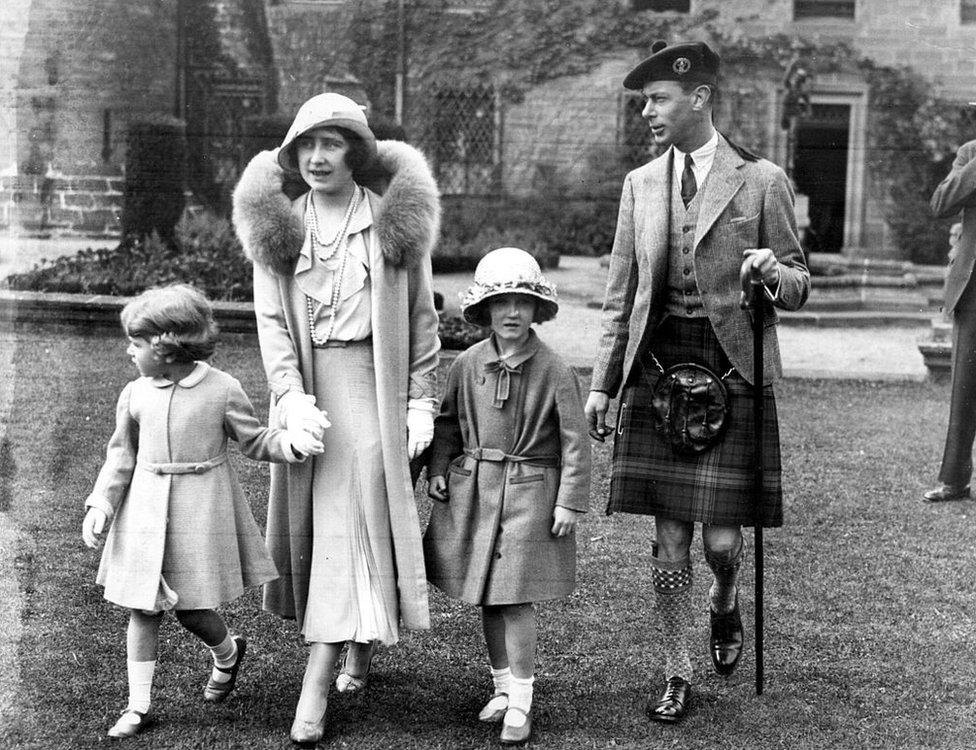
The young Princess Elizabeth was with her parents and cousin at Glamis Castle in 1931 to celebrate her grandparents' golden wedding anniversary
Between Aberdeen and Dundee, the Royal coffin travelled along the A90, skirting the Angus town of Forfar.
Nearby is Glamis Castle, the ancestral home of the late Queen's maternal grandparents and a place where she is said to have spent many happy childhood holidays.
It was where her parents honeymooned and where her mother, Queen Elizabeth, gave birth to her sister, Princess Margaret in 1930.
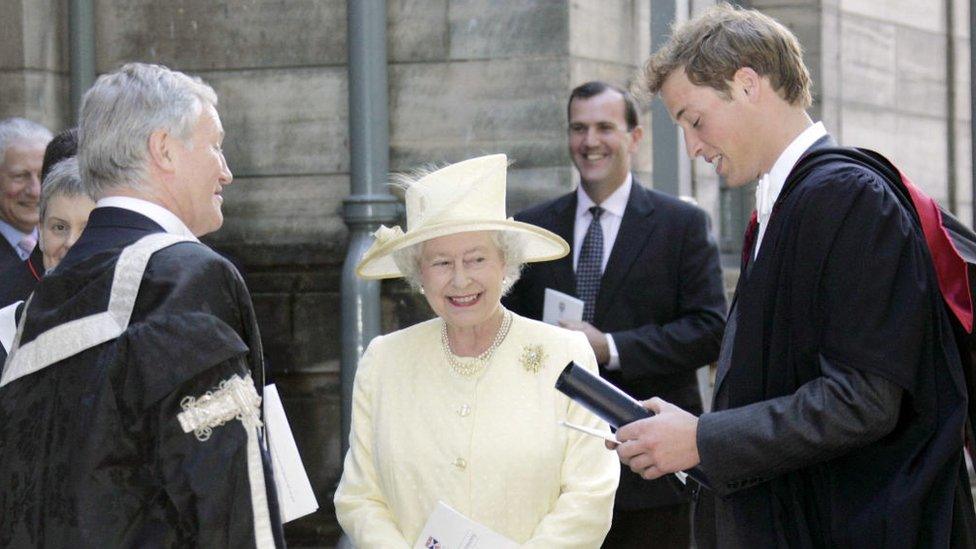
Prince William - now the Prince of Wales - graduated with a degree in geography
Past Perth, the coffin travelled through Fife - a short hop from St Andrews where the late Queen's grandson William went to university and met his future wife, Catherine.
She joined Prince Philip, her son Charles and his wife, Camilla, at the graduation ceremony in June 2005.
Fife - Naming ships and opening bridges
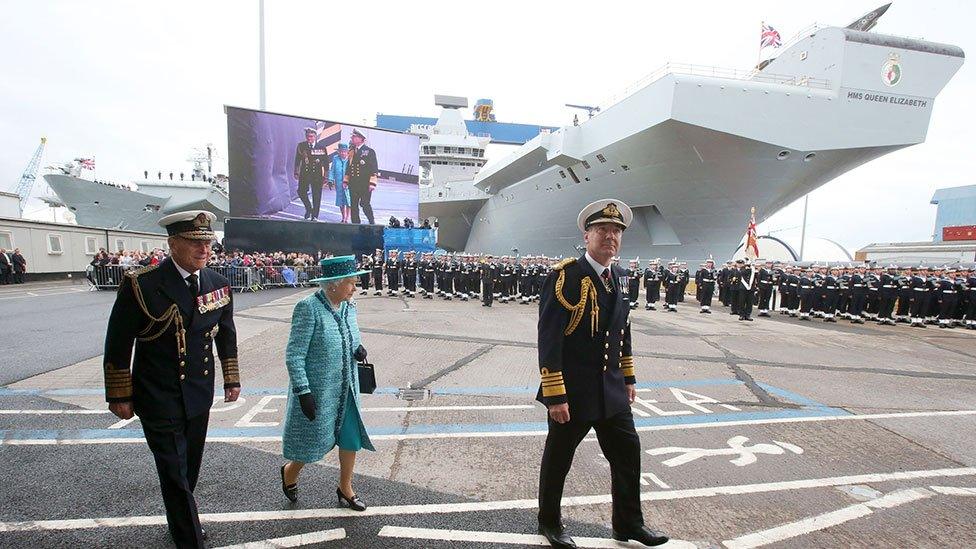
The Queen was joined by the Duke of Edinburgh as she named the Royal Navy's biggest ever ship
As the coffin reached the most southerly point of Fife, it passed Rosyth - where the UK's largest warship was officially named in her honour, in June 2014.
She smashed a bottle of whisky against the side of the aircraft carrier at Rosyth dockyard.
Six UK shipyards, and more than 10,000 people at more than 100 companies worked on HMS Queen Elizabeth.
It entered service in 2020 and is now the Royal Navy's Fleet Flagship.
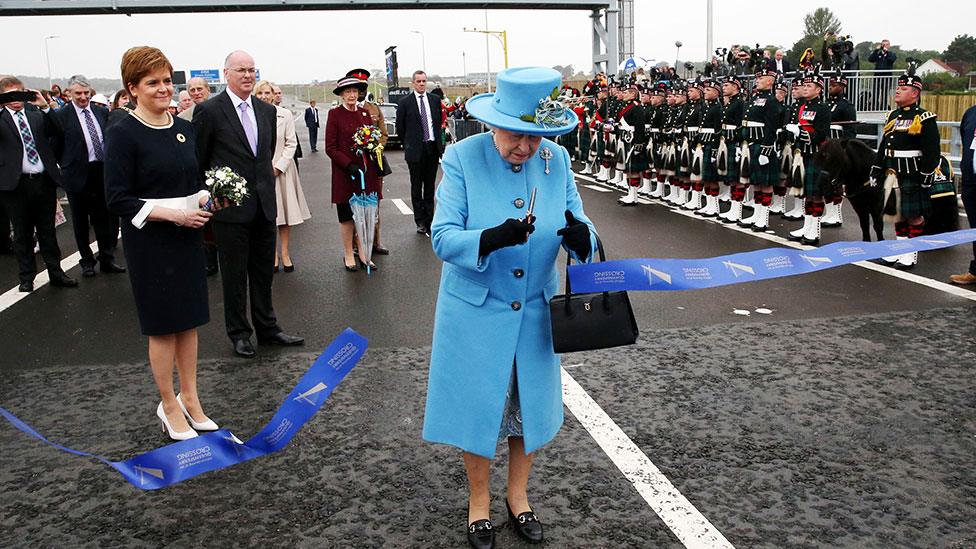
Nicola Sturgeon looked on as the late Queen cut the ribbon on the Queensferry Crossing
The late Queen opened two bridges across the Forth during her 70 year reign - the Forth Road Bridge in 1964, and the Queensferry Crossing in August 2017.
Her coffin crossed the new Queensferry Crossing, which links Fife to Edinburgh.
She returned to the Forth Road Bridge in 2014 to mark its 50th anniversary and was back just three years later to cut the ribbon on its £1.35bn replacement.
Queen Elizabeth II said the Queensferry Crossing, the UK's tallest bridge, was a "breath-taking sight" and one of three "magnificent structures" across the Forth.
Edinburgh - A new parliament
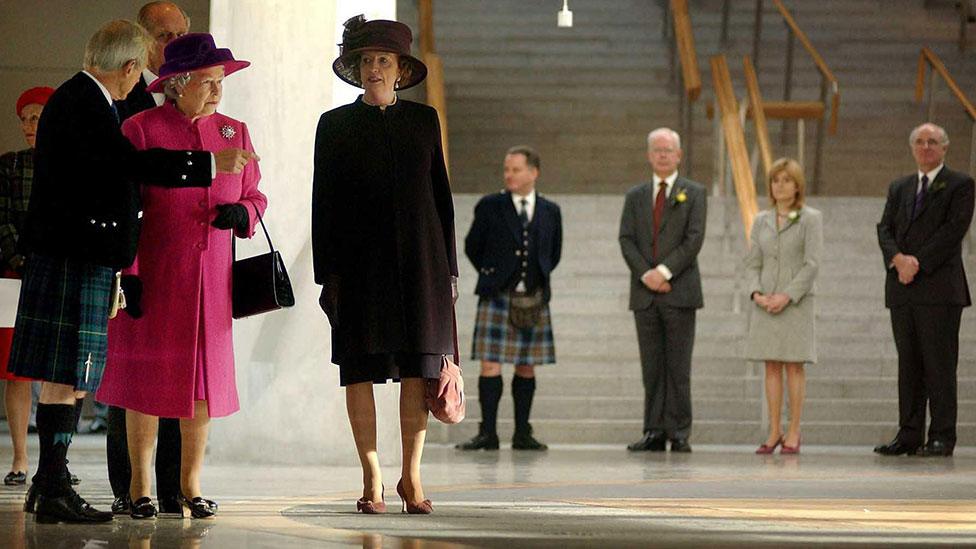
At the end of its journey, the Royal coffin was taken to the Palace of Holyroodhouse - the Royal residence opposite the Scottish Parliament building.
The late Queen officially opened the £431m building in 2004, external - three years late and over budget.
In a speech to MSPs she acknowledged the construction's "difficult and controversial birth" and urged them to make Holyrood a "landmark of 21st Century democracy".
She returned in October last year to open the sixth session of the Scottish Parliament at Holyrood despite some Covid restrictions still being in place.
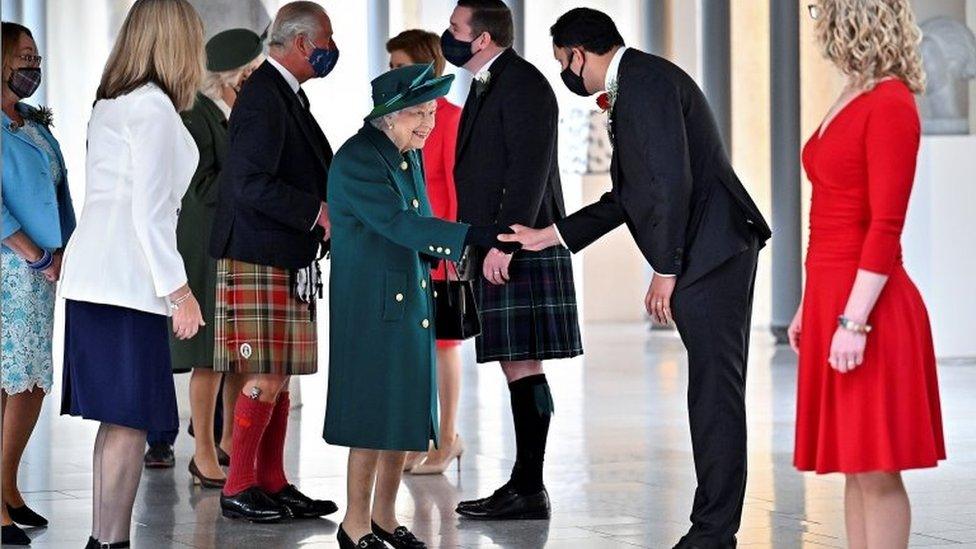
The leaders of the main political parties in Scotland greeted The Queen before the ceremony last year.
In a speech in the debating chamber, she paid tribute to those who made an "extraordinary contribution" during the pandemic.
And she spoke of her happy memories of Scotland and her "deep and abiding affection for this wonderful country".
"It is often said that it is the people that make a place and there are few places where this is truer than it is in Scotland."


Pictures copyrighted
Related topics
- Published8 September 2022
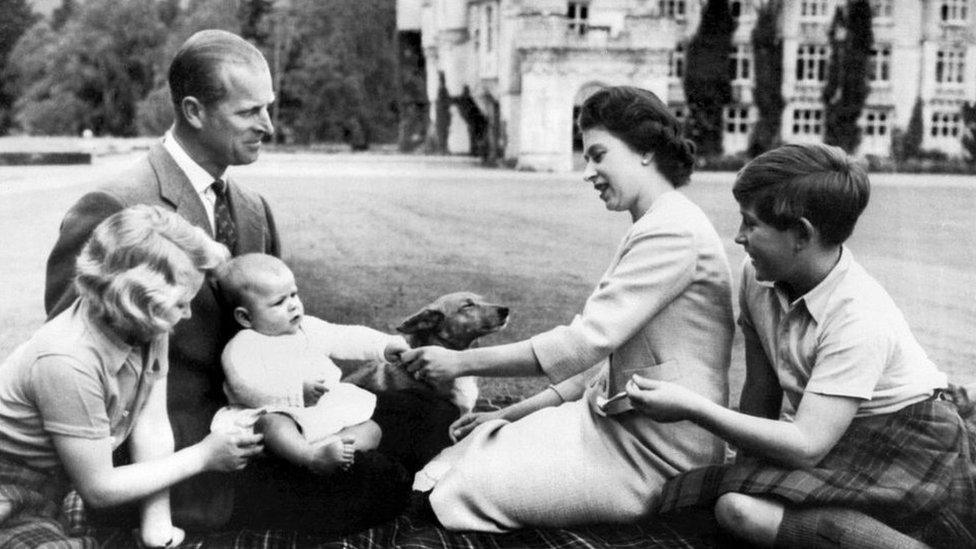
- Published9 September 2022
